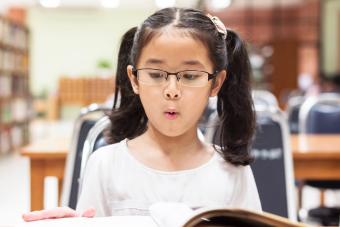
Have you ever read a poem with a beautiful flow of rhyming vowel sounds? This is a common literary device called assonance. Explore the meaning and uses of assonance in poetry, plus read some examples of assonance in poems for kids of all ages.
What Is Assonance in Poetry?
Just like a builder uses a hammer to build a house, a writer uses words as tools to create a lasting effect. One of the tools that a writer uses to make poems memorable is assonance. This is the repetition of vowel sounds in poems. It can be used with other tools like figurative language, rhyming and alliteration to make the poem grab the reader's attention.
What to Know About Using Assonance in Poems
You can use assonance in poetry to take it to the next level. One important tip is to make sure that your repetitive vowel sounds appear often enough and are near each other in the poem. This way, the reader will notice and "hear" the rhyme, making your poem more impactful.
You can also use assonance to create rhythm in your poem. Assonance not only emphasizes individual words, it emphasizes the syllable of the word. So if you want your poem to have a particular rhythm, try using assonance and see how it affects the flow of your poem.
Setting the Tone of a Poem With Assonance
Similar to consonance (the repetition of consonants), assonance in poetry can set the tone or mood of a poem. For example, if you use vowel sounds that are low like "tub," it creates a lower, crude tone. However, if you use light, happy vowel sounds like "wish," the words sound higher and more sophisticated.

So, if you use light, airy vowel sounds in a poem, it may sound happy and cheerful. If instead you choose to use lower, cruder sounds, this can create a dark or dreary mood. With this in mind, if you repeat the same vowel sounds through assonance, you can really set the mood for your poem.
Want to see how it's done? Check out some examples of assonance poems below.
Poems With Assonance Examples for Early Elementary Kids
Kids love silly poems. Try out these doozies by author Jennifer L. Betts that kids might get a kick out of. Can you spot the assonance?
Sunny Day Fun
The sun is shining high in the sky.
Ice cream is dripping down my cone.
I smile at my mother's sigh.
Hurry and eat so we can go to the fun zone.
The assonance is so subtle that sometimes it's hard to find. In this poem, the words shining, high, sky, ice, smile and sigh all have the long "i" sound. In the last line, the words so, go and zone all have the long "oh" sound.
Gloomy Day
I waited, watching the snail slowly wind a trail down the chain.
For a friend that never came.
My plain favorite red shirt had a stain from wet paint.
And that isn't my only complaint.
This poem repeats the "ay" vowel sound with the words waited, snail, trail, chain, plain, stain, paint and complaint. This poor kid is having a bad day!
Examples for Tweens and Teens
Older kids still like poems, but the subject matter is a bit different. Find the assonance in a few poems that tweens and teens might identify with.

Loss of a Friendship
Bang. Bang. Bang.
The sound of the rain.
I strained against the pane,
To watch you drive away.
For years, we beat along the beach together.
I thought we would be forever.
But now my tears won't go away.
My best friend will be gone every day.
In this poem, we can see the pain of a friend moving away. There are a couple of different assonances used. The first one is the "ay" sound in bang, rain, strained, pane and away. There is also the long "ee" sound in "we beat along the beach."
Church Bells
Hear the mellow bells swell.
Dwell on the happiness those bells foretell.
They too.
Find you.
Through the morning dew.
Clinging and clanging with the morning light.
Taking away the dark of night.
Hear the mellow bells swell.
Dwell on the happiness those bells foretell.
In the first and second lines, along with the last two lines, you can see the repetition of the short "eh" sound in mellow, bells, swell, dwell and foretell.
The Pain in Rain
The rain falls on the window pane.
It sails down the glass.
This plain rain mimics my pain.
But alas,
What am I to say?
I'm just unhappy on this day.
Do you see all the long "ay" and short "a" sounds in this one? The words like rain, pane, sails, plain, pain, say and day all have the same sound, as well as glass, alas, and unhappy.
Creating Assonance in Poetry
The literary devices that you can use to create original poems are vast. Assonance is just one, but it is a fun literary device that lets you play with sounds and mood within a poem. Now that you know the basics of this writing device, try creating a poem of your own.







